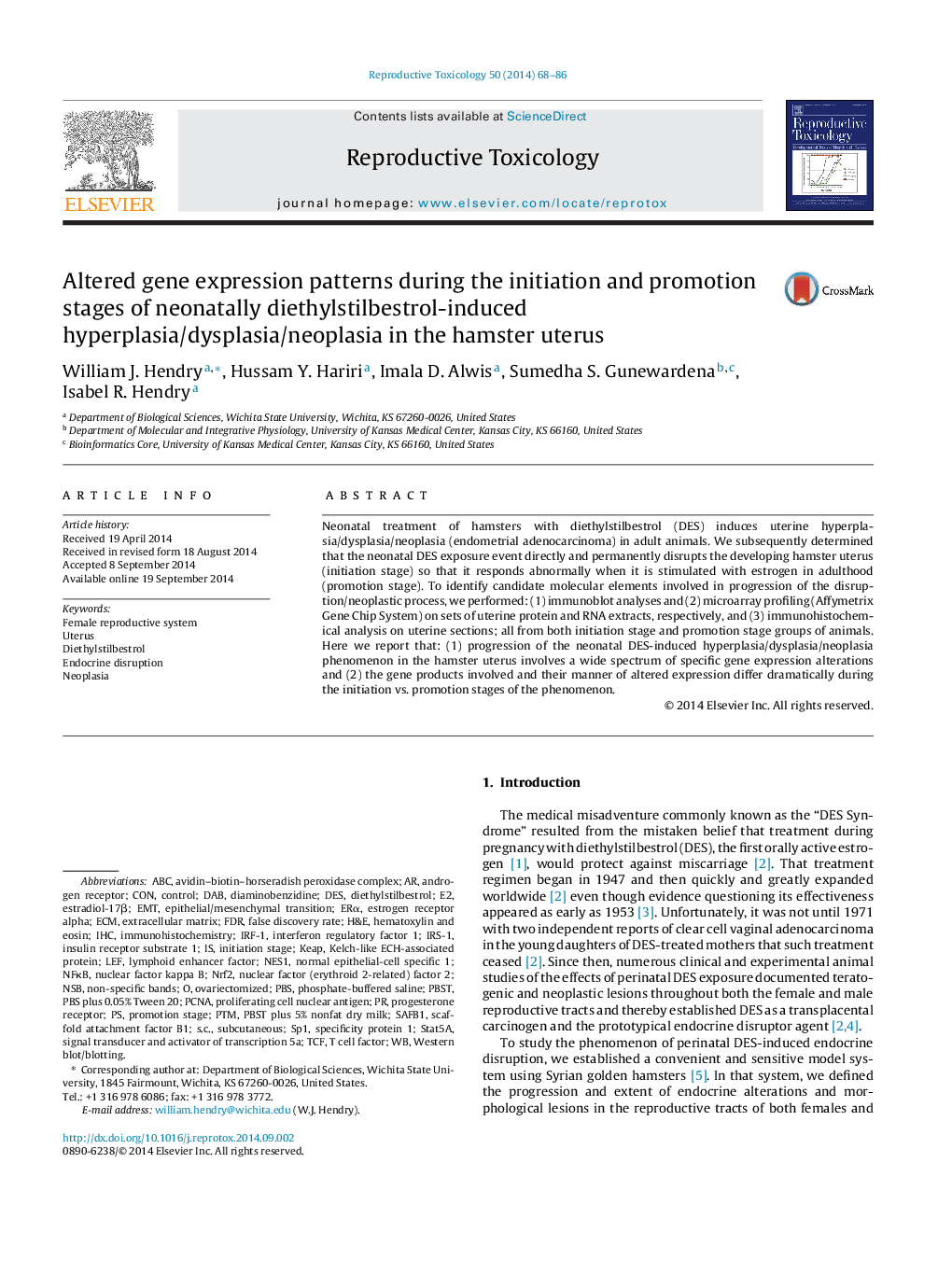| Article ID | Journal | Published Year | Pages | File Type |
|---|---|---|---|---|
| 2593495 | Reproductive Toxicology | 2014 | 19 Pages |
•Neonatal DES exposure directly disrupts the hamster uterus (initiation stage).•It then responds abnormally to estrogen in adulthood (promotion stage).•We analyzed specific protein and RNA expression in uteri from both stages.•The disruption process involves many specific gene expression alterations.•They differed dramatically during the initiation vs. promotion stages.
Neonatal treatment of hamsters with diethylstilbestrol (DES) induces uterine hyperplasia/dysplasia/neoplasia (endometrial adenocarcinoma) in adult animals. We subsequently determined that the neonatal DES exposure event directly and permanently disrupts the developing hamster uterus (initiation stage) so that it responds abnormally when it is stimulated with estrogen in adulthood (promotion stage). To identify candidate molecular elements involved in progression of the disruption/neoplastic process, we performed: (1) immunoblot analyses and (2) microarray profiling (Affymetrix Gene Chip System) on sets of uterine protein and RNA extracts, respectively, and (3) immunohistochemical analysis on uterine sections; all from both initiation stage and promotion stage groups of animals. Here we report that: (1) progression of the neonatal DES-induced hyperplasia/dysplasia/neoplasia phenomenon in the hamster uterus involves a wide spectrum of specific gene expression alterations and (2) the gene products involved and their manner of altered expression differ dramatically during the initiation vs. promotion stages of the phenomenon.
